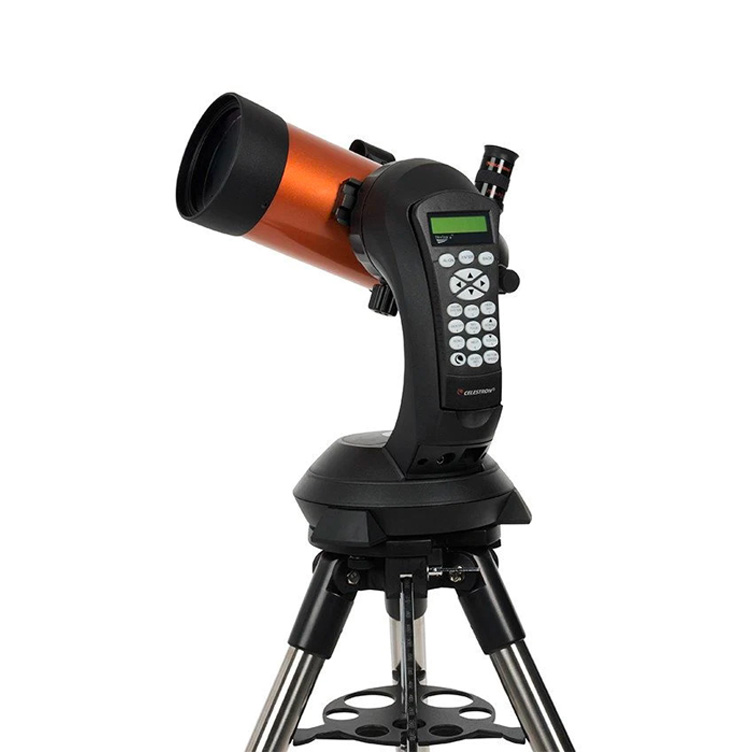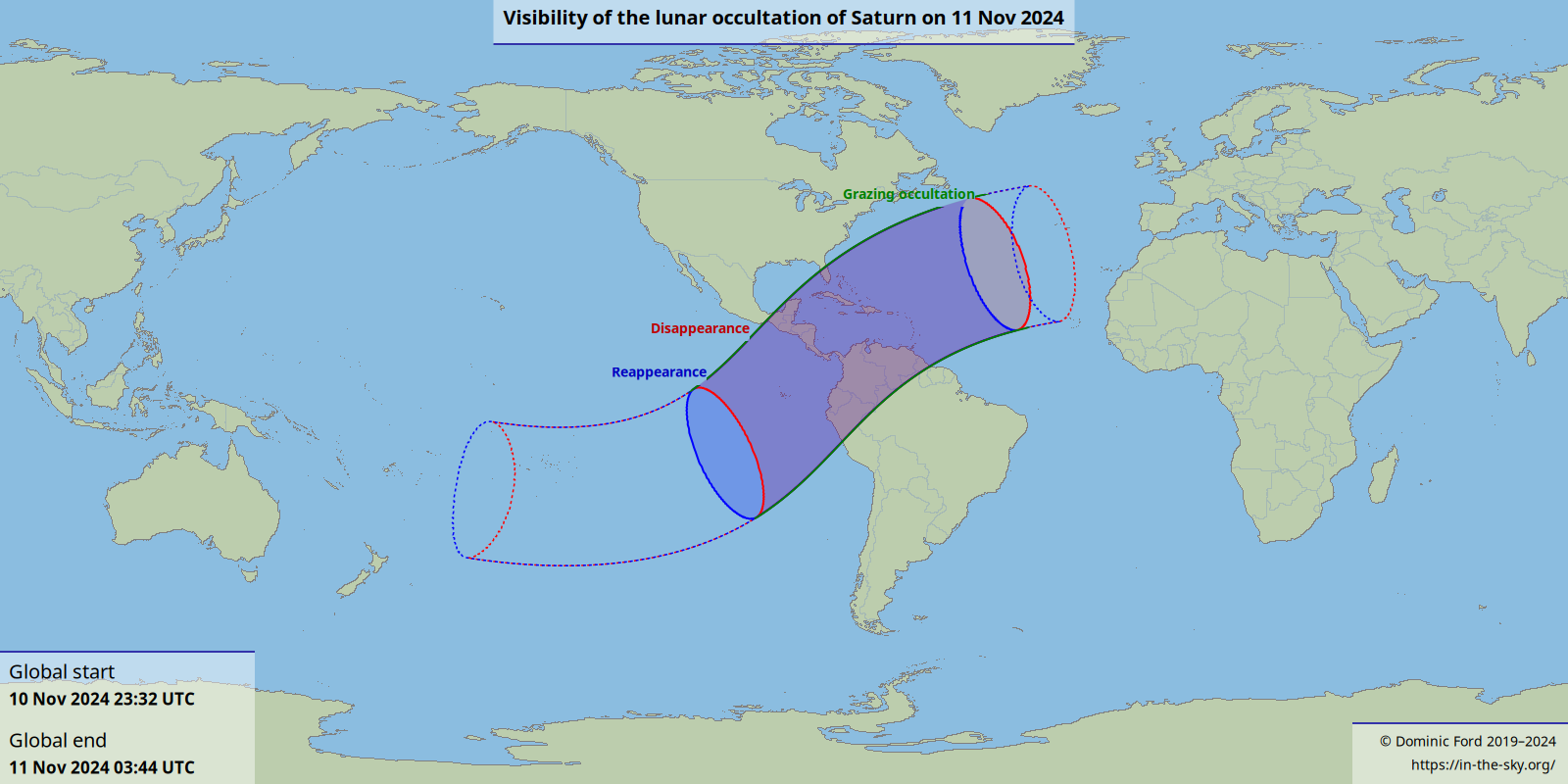
Saturn gets close to the moon tonight, and skywatchers in Florida, northwestern South America, the Caribbean and Central America will see the ringed planet briefly disappear behind our lunar companion.
When a celestial body, such as a moon, planet or an asteroid passes in front of another celestial body, blocking its view, we call that an occultation. The word is derived from the Latin occultäre, to conceal or hide.
Occultations of planets by the moon are fairly rare events for any given location on Earth, but when they do occur, they often happen in bunches. Saturn is currently undergoing a yearlong series of occultations. By next February the ringed planet will have ducked behind the moon 12 times over the course of less than a year (ten in 2024 and twice in early 2025). Yet few of these occultations were or will be favorable for North Americans.
For example, the most recent Saturn-moon match-up was visible only from western North America and played-out in predawn darkness. The remaining four of these "eclipses of Saturn" are no better, with three of them when the twosome is not above the Western Hemisphere's horizons.
In fact, only the Saturn occultation taking place this month — on the evening of Sunday, Nov. 10 — qualifies as a "prime-time event." The moon will be a waxing gibbous phase, 70 percent illuminated, when it overtakes the ringed planet. By then, the show will be taking place for those in the viewing area.
Florida's show

Want to see the moon up close or the rings of Saturn? The Celestron NexStar 4SE is ideal for beginners wanting quality, reliable and quick views of celestial objects. For a more in-depth look at our Celestron NexStar 4SE review.
And what about North America? Well, it won't be a complete shutout, as Florida, or at least a part of the Florida Peninsula, will have a chance at seeing Saturn disappear and reappear from behind the disk of our natural satellite. Anywhere south of a 30 mile (50 km) wide path running from Bradenton on Florida's west coast, to New Smyrna Beach on the east coast will see an occultation. Areas north of that path will see the moon closely miss Saturn.
While Floridians will see the event in a nighttime sky, Saturn dramatically disappears behind the moon's dark limb but will reappear from behind the moon's brightly illuminated limb, so that in order to see Saturn's emergence, a telescope or at the very least a good pair of binoculars are a necessity. Be sure to heck out our guides on our best telescopes for beginners or the best binoculars to find the right gear for you.
Despite these obstacles the event will be visually impressive because of the appearance of Saturn itself. With the planet's northern hemisphere currently tilted toward Earth, the ring system is tipped 5 degrees from edgewise and is still very well displayed. Even a 2.4-inch (60-millimeter) telescope will provide a pleasant view of the planet, its rings and the occultation. It will take at least two minutes for both planet and rings to either disappear or reappear from behind the moon.

Schedule for central and southern Florida
In Table 1 below, we provide the local Eastern Standard Times for the disappearance and reappearance of Saturn for twelve Florida cities. The International Occultation Times Association (IOTA) has a page devoted to this particular event, which provides listings for 379 locations in the occultation zone in Universal Time (UT), as well as a map that depicts the regions where the occultation can be seen.
Don't miss this near miss!
For the rest of North America, this will be a very close approach of the moon to Saturn (called an appulse). The moon, moving around the Earth in an easterly direction at roughly its own diameter each hour will seem to creep slowly toward and ultimately pass just below the ringed planet. Even though most of North America will miss out on an occultation, Saturn will almost certainly attract attention even from casual viewers who might wonder, "What's that bright star?" as it slowly appears to glide above the moon.

After closest approach, the moon will move slowly away from Saturn. Table 2 provides the specific details for 16 selected North American cities. The table gives civil times (all p.m.) of Saturn's closest approach to the edge of the moon's upper limb. An asterisk (*) indicates that the closest approach occurs during evening twilight.
Separation between Saturn and the moon's upper edge is given in terms of minutes of arc (the apparent width of the moon on Nov. 10 is 33 arc minutes) and the equivalent given in angular degrees compared to the moon's apparent diameter 0f 0.56°. So, in the cases in Kansas City and Winnipeg, Saturn will approach to within less than one-half of a lunar diameter at its closest approach to the moon's upper limb.
Calculated exclusively for SPACE.com by Joe Rao.
Don't miss our guide to the night sky for tonight, updated daily with what you need to know for watching the skies for events like this one!
Joe Rao serves as an instructor and guest lecturer at New York's Hayden Planetarium. He writes about astronomy for Natural History magazine, the Farmers' Almanac and other publications.







